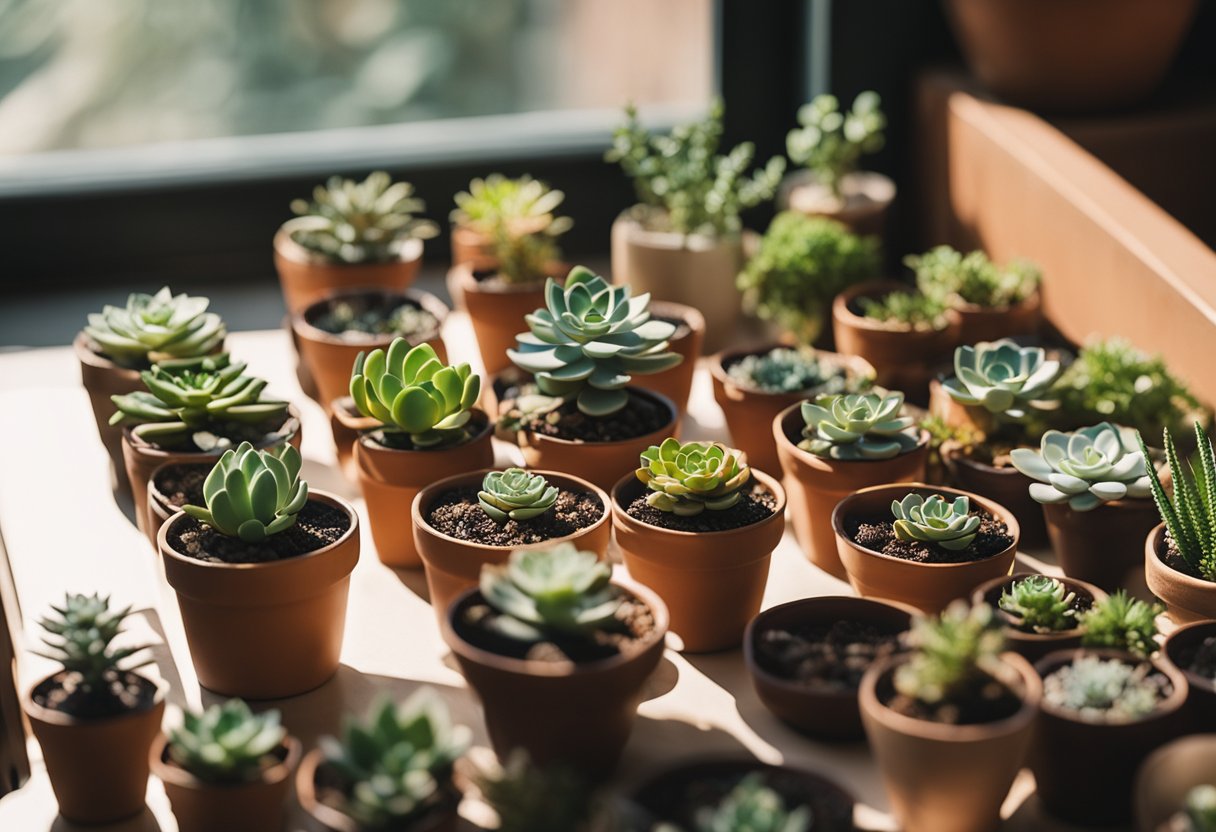Small Pot Succulents
Small pot succulents are perfect for adding a touch of green to tight spaces. These compact plants thrive in tiny containers, making them ideal for windowsills, desks, and small apartments.
You can choose from a variety of cute succulents that won’t outgrow their pots. Popular options include Echeveria minima, Aloe vera, and Gasteria ‘Little Warty’. These plants form small rosettes or clusters that fit nicely in shallow dishes or mini pots.
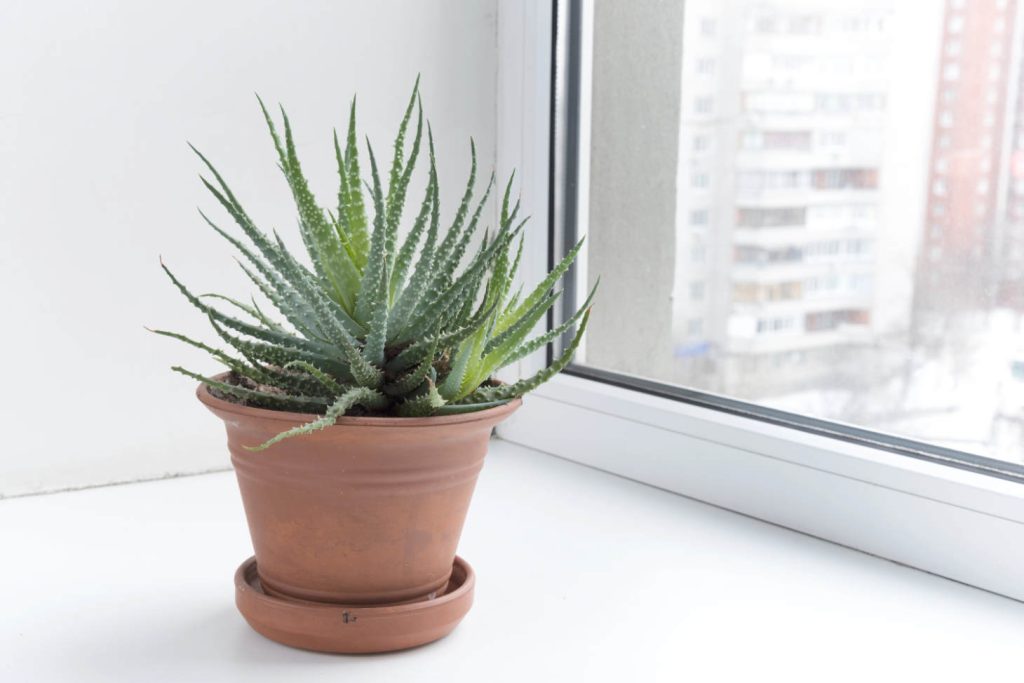
Caring for small pot succulents is easy. They need bright light, well-draining soil, and infrequent watering. You can use ceramic, terracotta, or plastic pots with drainage holes. Just remember not to overwater, as succulents store moisture in their leaves and stems.
Choosing the Right Succulents
Picking the best tiny succulents for small pots is key. The right plants will thrive in limited space and add charm to any setting.
Best Mini Succulents
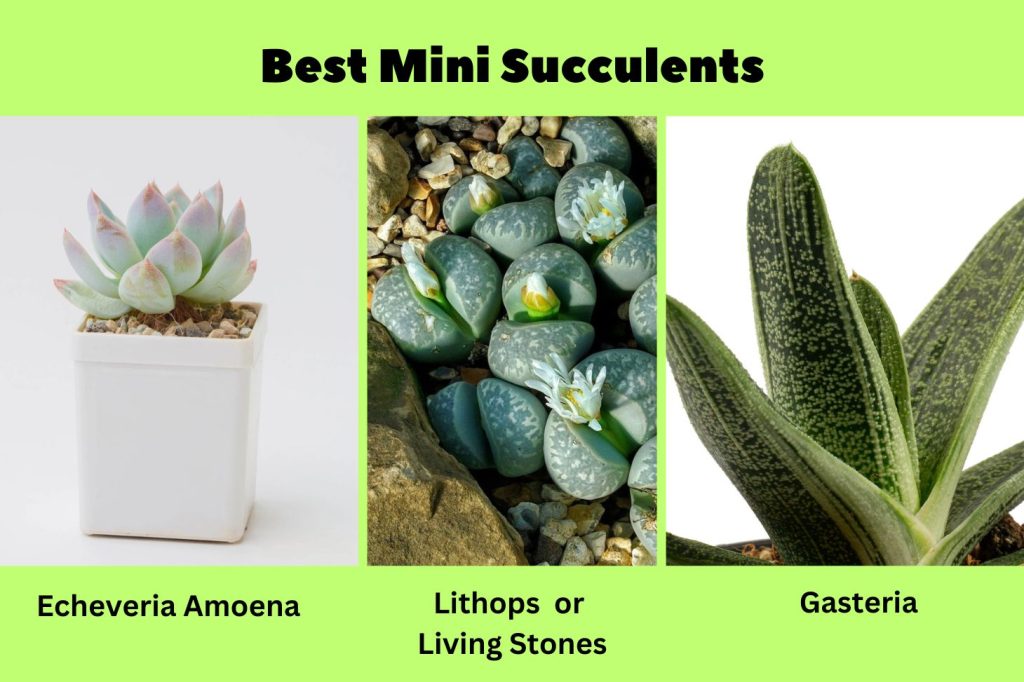
Echeveria amoena is a top choice for small pots. This cute rosette grows to about 2 inches wide. It has pink-tipped leaves that add a pop of color.
Lithops, or “living stones,” are perfect for tiny spaces. These strange plants look like pebbles and typically grow to a height of 1 to 3 inches and can have a spread of 2 to 4 inches. They need very little water.
Gasteria is another great pick. Some species stay small and have spotted, tongue-shaped leaves. They do well in bright, indirect sunlight but can tolerate low light conditions, making them good for indoor spots.
Popular Types for Small Pots
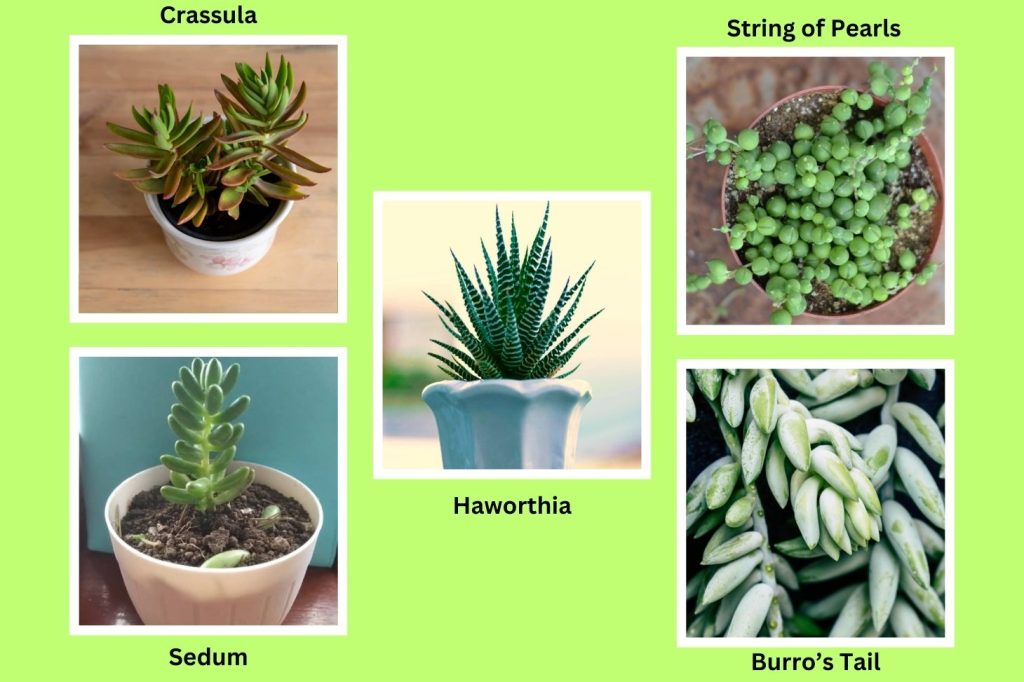
The panda plant is loved for its fuzzy, silver leaves with brown tips. It grows slowly and fits nicely in small containers.
Here’s a quick list of other popular mini succulents:
- Haworthia
- Sedum
- Crassula
- String of pearls
- Burro’s tail
These plants all stay compact and are easy to care for. Mix and match them to create cute displays. Remember to use well-draining soil and pots with holes. Water less often than you think you need to. Your tiny succulents will be happy and healthy in their small homes.
Pots and Containers
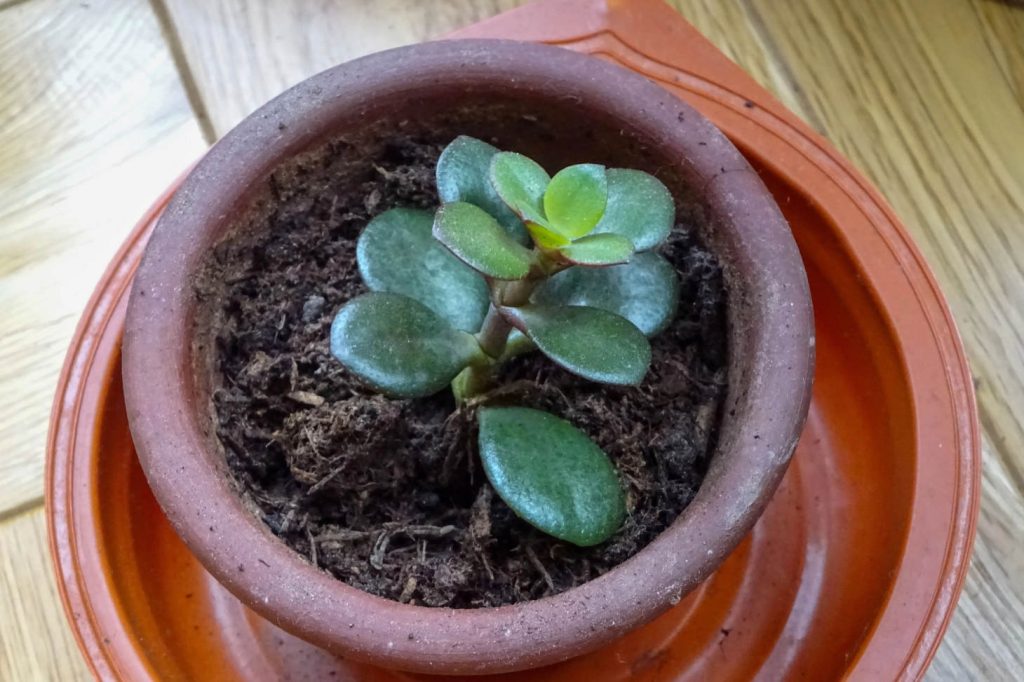
Properly sized pots are key for growing healthy succulents. The right size and material can make a big difference in your plants’ health and growth.
Appropriate Pot Sizes
For most small succulents, pots 2-4 inches wide work well. These sizes let roots grow but don’t hold too much water. A good rule is to pick a pot about 10% larger than the plant’s width. This gives room to grow without being too big.
As plants get bigger, move them to larger pots. A 6-inch pot suits many medium succulents. For groups of small plants, try shallow dishes 6-12 inches wide. These allow you to create mini gardens.
Always check that pots have drainage holes. This is crucial for succulents. Without holes, water can build up and rot roots.
Types of Pots and Materials
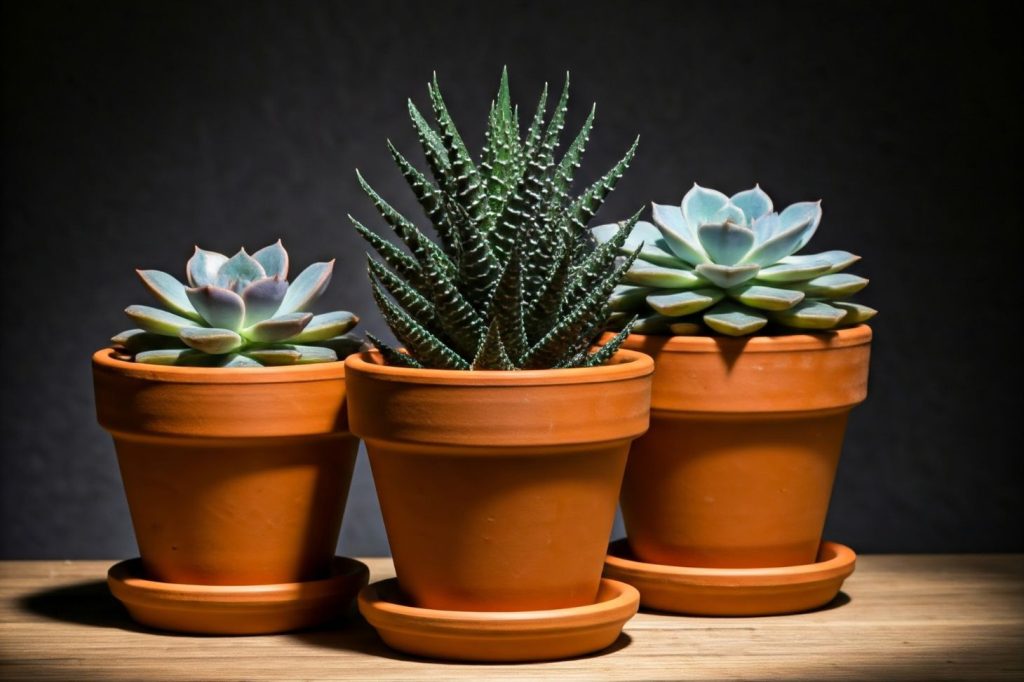
Clay and ceramic pots are great choices. They let air and water move through, which succulents like. These pots come in many cute styles, from simple to fancy.
Plastic pots are light and cheap. They work well for young plants or if you move your succulents often. Metal pots can look nice but may get too hot in the sun.
Some fun pot ideas for succulents:
- Teacups with drainage holes added
- Small animal-shaped planters
- DIY concrete pots
- Vintage tins (with holes drilled)
When picking a pot, think about where it will go. Indoor pots can be more decorative. Outdoor pots need to be sturdy and weather-resistant.
Soil and Substrate
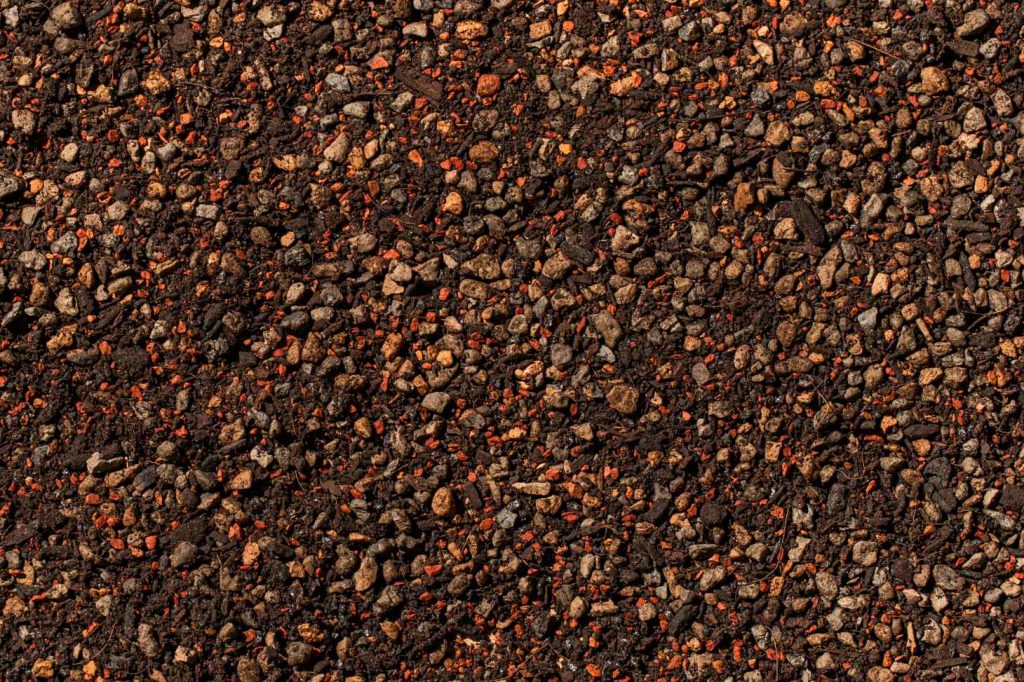
Good soil is key for healthy succulents in small pots. The right mix allows roots to breathe and prevents water from sitting around them.
Best Soil Mix for Succulents
For small pot succulents, use a well-draining soil mix. You can buy pre-made succulent mix or make your own. A good DIY mix is:
- 3 parts potting soil
- 2 parts coarse sand
- 1 part perlite or pumice
However, sourcing the right ingredients and dealing with leftovers can be a hassle. Our succulent soil is the easy solution. It’s perfectly balanced for optimal drainage and aeration, so your succulents thrive. Skip the mess and get right to enjoying your plants. Buy our soil!
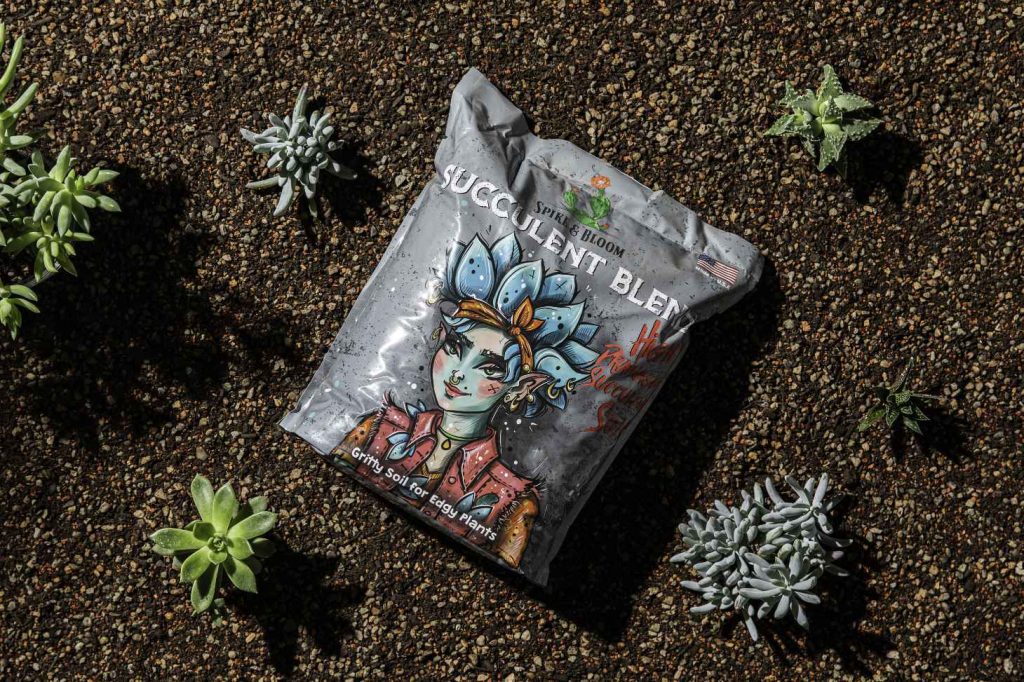
When planting, don’t pack the soil too tightly. Leave some air pockets for roots to grow. Water your succulent only when the soil is completely dry.
Remember, succulents hate wet feet. Good soil prevents root rot and keeps your plants happy.
Planting Techniques
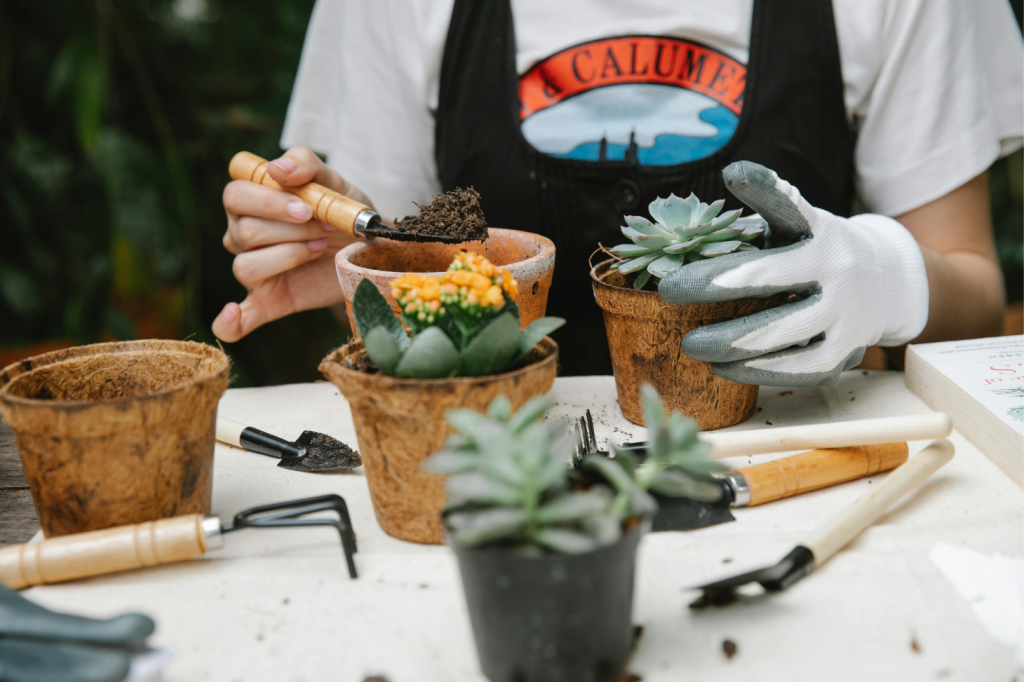
Planting small succulents in pots requires care and attention to detail. The right approach ensures your tiny plants thrive in their new homes.
How to Plant Small Succulents
Choose a pot with drainage holes. Fill it 2/3 full with well-draining cactus or succulent soil mix.
Gently remove your succulent from its nursery pot. Shake off excess soil from the roots, then place the plant in the new pot.
Add more soil around the roots, pressing lightly to remove air pockets. Leave about 1/2 inch of space between the soil surface and pot rim for watering.
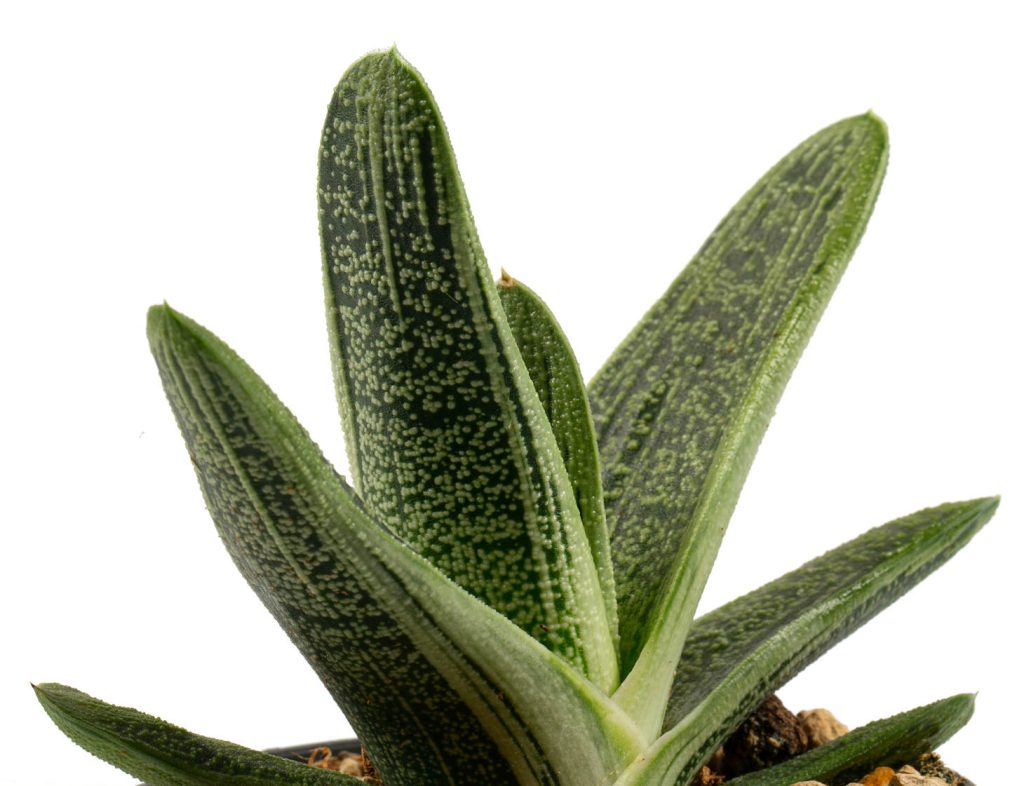
Plant small succulents like Gasteria ‘Little Warty’ or Echeveria minima 1/2 to 1 inch apart in group plantings.
Water sparingly after planting. Place the pot in bright, indirect light. Baby jade and aloinopsis do well in small pots and need similar care. Remember to adjust watering based on your specific plant’s needs.
Watering Small Succulents
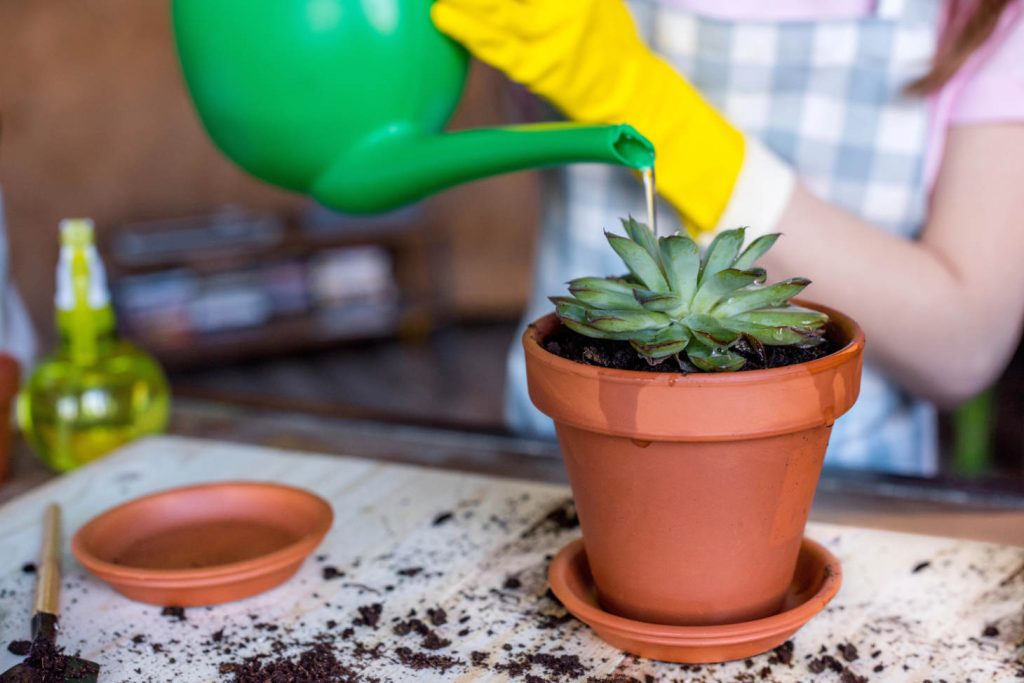
Proper watering is key for healthy small succulents. These plants need less water than most, but getting it right keeps them thriving.
Watering Requirements
Water small succulents when the soil is completely dry. Stick your finger about an inch into the soil to check. For tiny pots, you can lift them to feel if they’re light, which means they need water.
Use a small watering can with a thin spout. This helps you control the flow and avoid overwatering.
Pour water slowly around the base of the plant until it runs out the bottom of the pot.
For succulents like Sedum, Haworthia, and Echeveria, water deeply but less often. These plants store water in their leaves, so they can go longer between waterings.
In winter, cut back on watering. Most succulents need less water when they’re not actively growing.
Light and Temperature
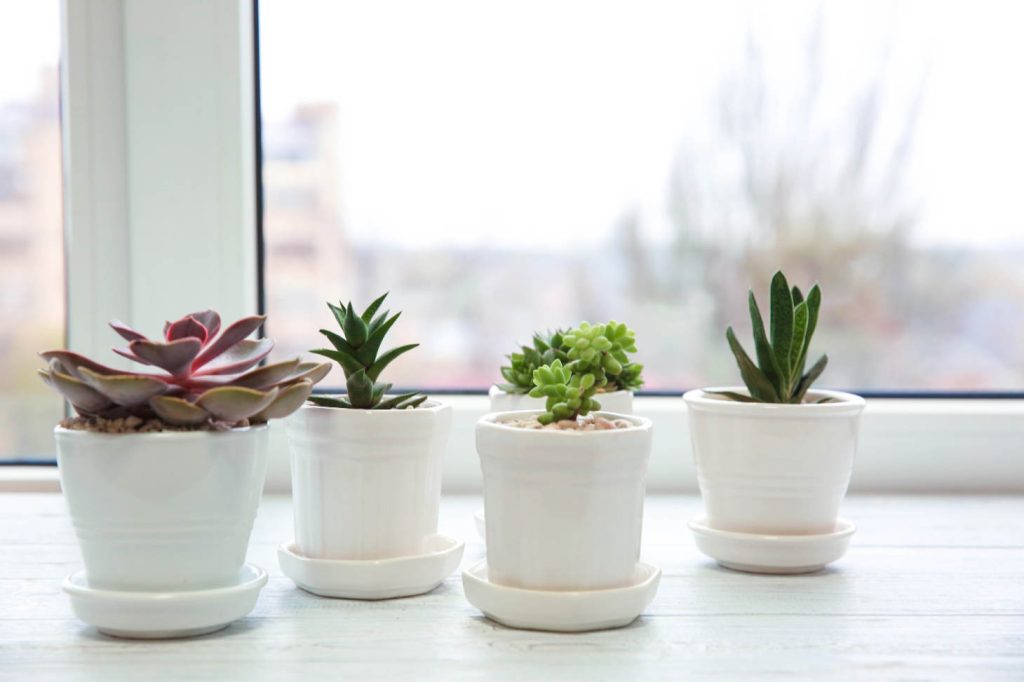
Small pot succulents need the right light and temperature to thrive. These factors affect their growth, color, and health.
Optimal Light Conditions
Most small pot succulents do best in bright, indirect sunlight. Place them near a window that gets plenty of light, but not in direct sun. Too much direct sun can burn their leaves.
Some succulents, like the Flower Dust Plant, can handle more light. They may even develop pretty colors when exposed to more sun. But be careful not to overdo it.
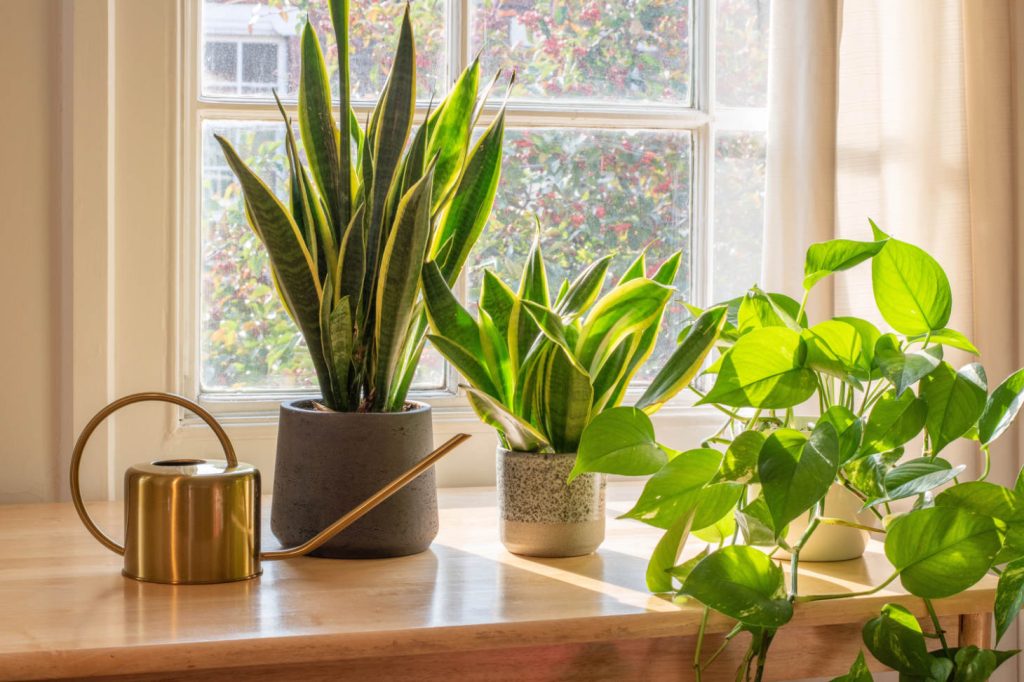
For low-light areas, try plants like Haworthia or Snake Plants (Dracaena trifasciata). These succulents can grow well in less bright spots. They’re great choices for offices or rooms with less natural light.
If you can’t provide enough natural light, use grow lights. Look for bulbs with a color temperature of 6000K-6500K. This mimics natural sunlight and helps your plants grow strong.
Temperature Tolerance
Most small pot succulents prefer warm temperatures. They do well in the range of 60-80°F (15-27°C). Keep them away from cold drafts and heat vents.
In winter, move your plants away from cold windows. If you live in a cold area, bring them inside when temperatures drop below 50°F (10°C).
Be careful of extreme heat too. While succulents like warmth, temperatures above 90°F (32°C) can stress them. Provide shade or move them to a cooler spot on very hot days.
Fertilizing Fundamentals
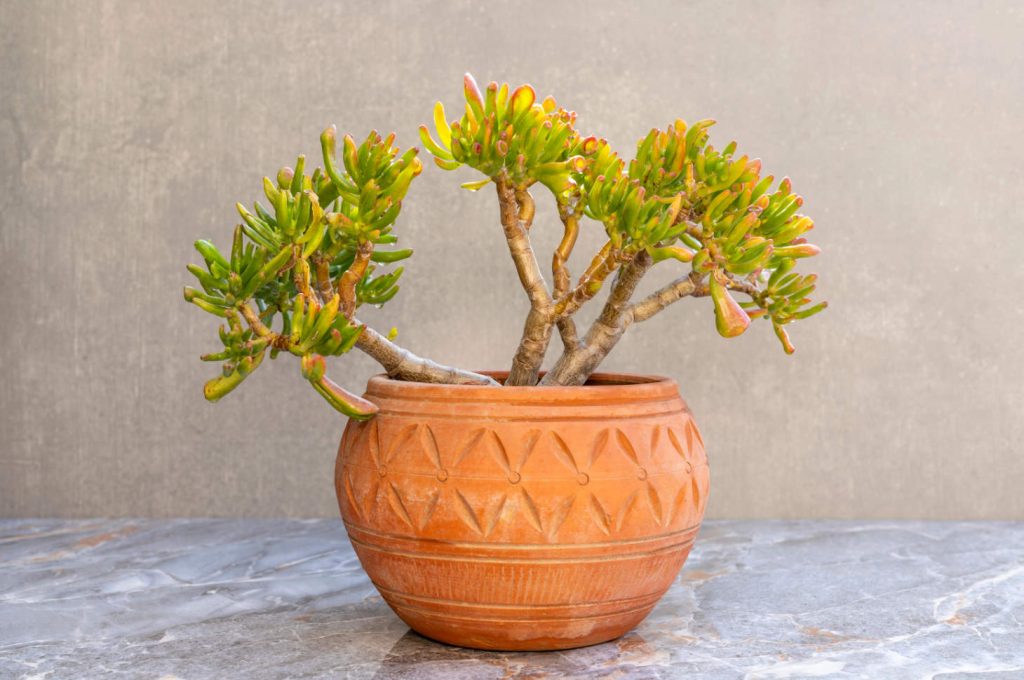
Succulents in small pots need occasional fertilizing to stay healthy. The right timing and method can make a big difference in their growth.
When and How to Fertilize
Feed your succulents in spring as they start growing. Use a diluted liquid fertilizer once a month during the growing season. Mix it half-strength with water to avoid burning the roots. Water your plants before adding fertilizer.
For an easy option, try slow-release pellets. Apply them in early spring and again in midsummer. These feed your plants gradually over time.
Cactus-specific fertilizers work well for most succulents. They have the right nutrient balance for these plants. Avoid fertilizing in fall and winter when succulents are dormant.
Don’t overdo it. Too much fertilizer can harm your plants. It’s better to under-fertilize than to use too much.
For sedum morganianum (burro’s tail), use a very light hand with fertilizer. This trailing succulent doesn’t need much to thrive.
Propagation and Growth
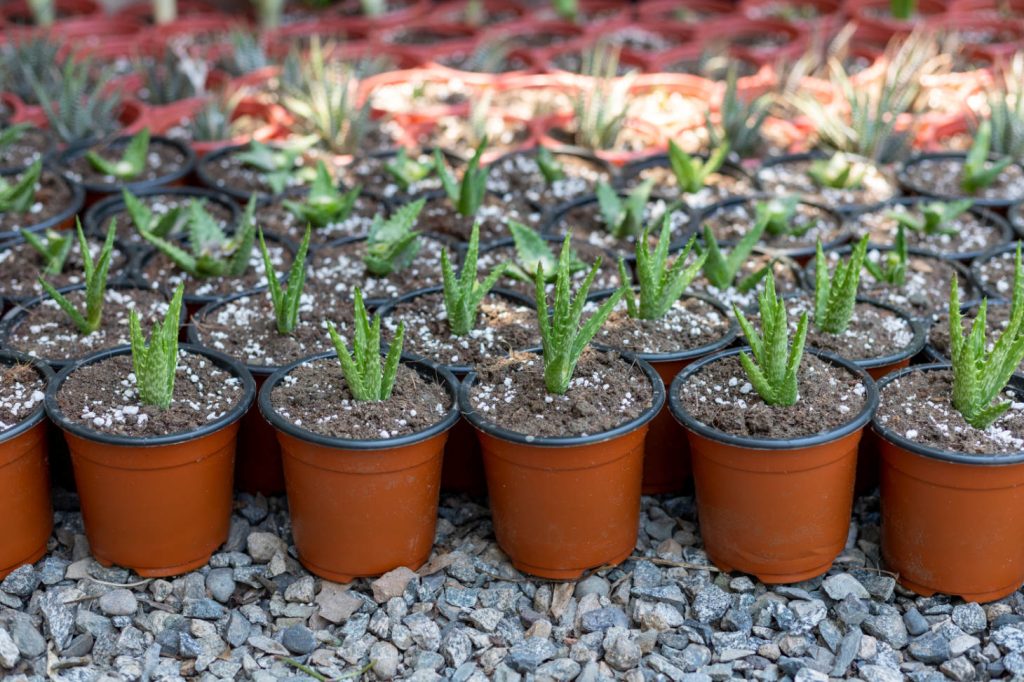
Propagating small pot succulents is simple and rewarding. You can easily grow new plants from leaves or cuttings.
Propagation Techniques
To propagate succulents from leaves, gently remove a healthy leaf from the plant. Let it dry for a few days, then place it on well-draining soil. Mist the soil lightly and wait for roots to form.
For stem cuttings, cut a piece of stem with a clean knife. Remove lower leaves and let the cutting dry for 2-3 days. Plant it in succulent soil and water sparingly.
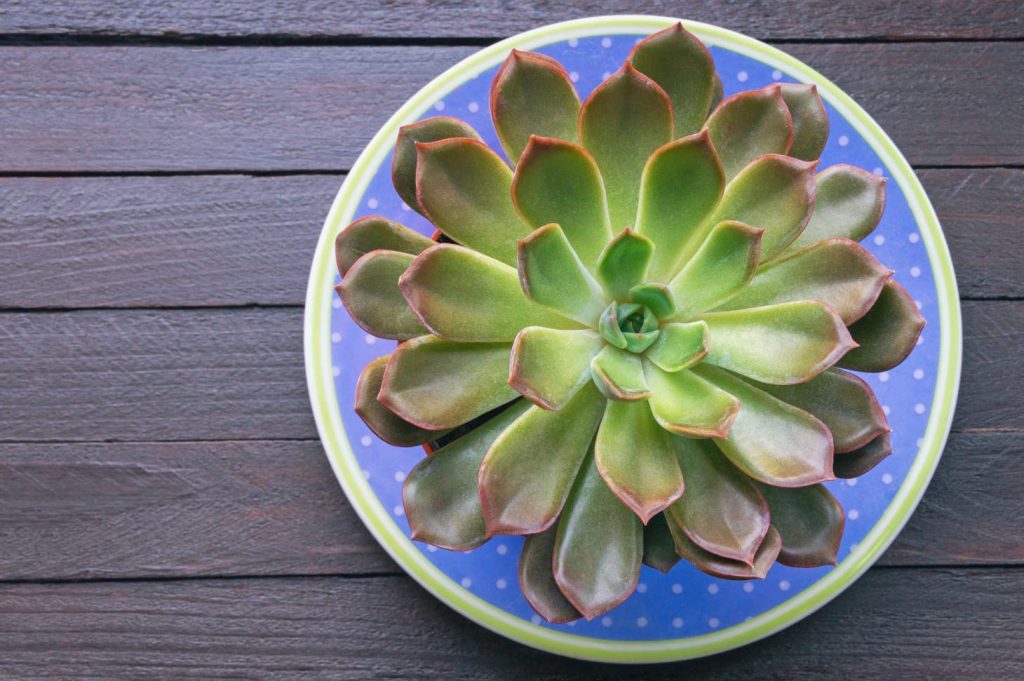
Sempervivum and Haworthia cooperi grow offsets you can separate and replant. Meanwhile, string of pearls propagates well from stem cuttings. For baby toes, use leaf or stem cuttings.
Use a sandy, well-draining soil mix in small pots. Place newly propagated plants in bright, indirect light. Water lightly when the soil is completely dry.
Be patient, it can take weeks or months for new growth to appear. Once roots form, you can pot up your new succulents and care for them like mature plants.
Common Issues and Solutions
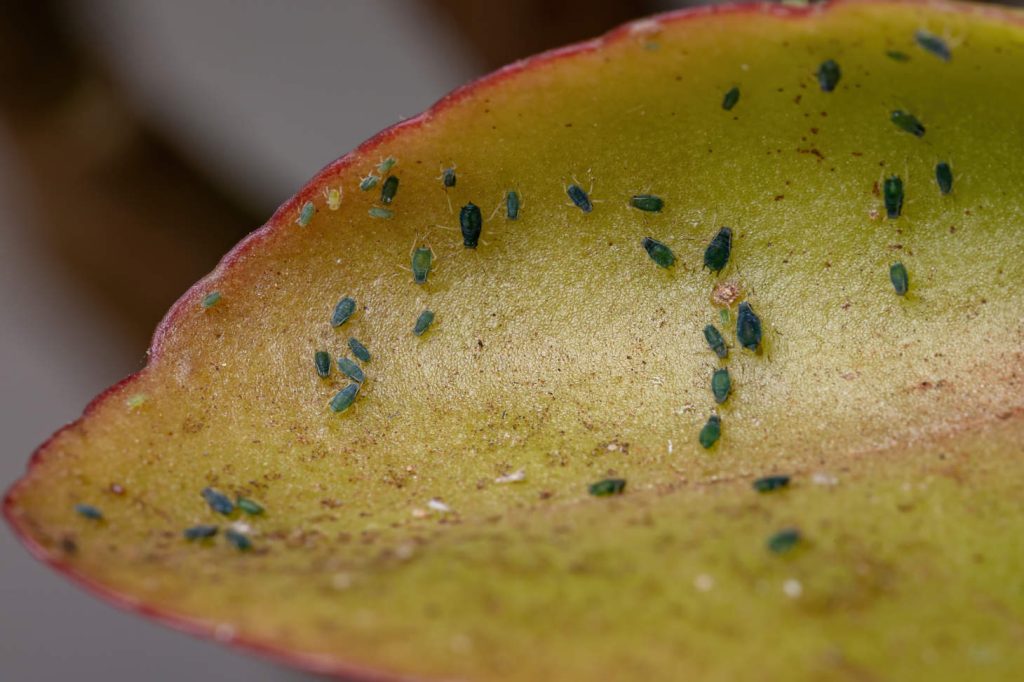
Small pot succulents face challenges that can impact their health and growth. Pests, diseases, and care mistakes are common problems you might encounter. With the right knowledge, you can tackle these issues and keep your succulents thriving.
Pest and Disease Management
Watch out for mealybugs, spider mites, and scale insects on your succulents. These pests can damage leaves and stunt growth. To get rid of them, wipe the leaves with rubbing alcohol or use insecticidal soap. For zebra plants, check under the leaves for hidden pests.
Root rot is a serious disease caused by overwatering. If you notice mushy, black roots, remove the plant from its pot and cut away damaged parts. Let the roots dry before repotting in fresh, well-draining soil.
Faucaria tigrina, also known as tiger jaws, can develop fungal infections in humid conditions. Improve air circulation and reduce watering to prevent this issue.
Troubleshooting Care Mistakes
Overwatering is the most common care mistake for succulents like Little Bobo. Signs include yellowing leaves and a squishy texture. Water only when the soil is completely dry. Use a pot with drainage holes to prevent water from sitting at the bottom.
Underwatering causes wrinkled, dry leaves. If you notice this, give your succulent a good soak. Let the water drain fully before putting it back in its spot.
Insufficient light leads to leggy growth. Move your succulent to a brighter location if you see it stretching out. Gradually increase light exposure to prevent sunburn.
Pot size matters. Too large a pot can lead to overwatering. Choose a container that’s only slightly bigger than the plant’s root system.
Designing with Small Succulents
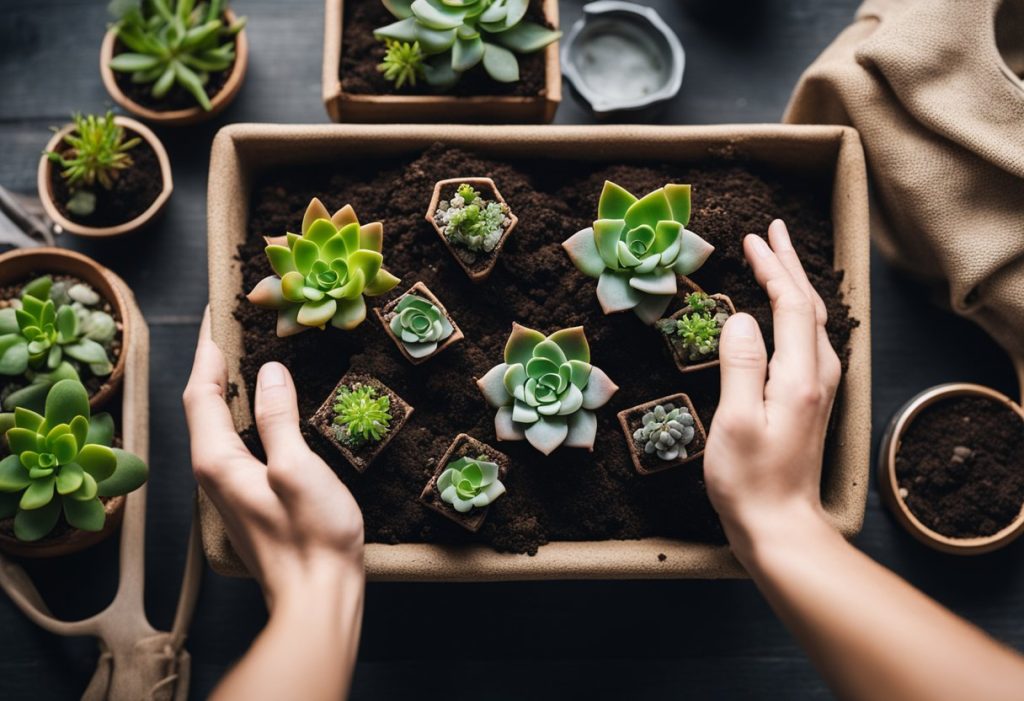
Small succulents offer endless possibilities for creative and charming designs. You can make eye-catching arrangements and enchanting fairy gardens with these compact plants.
Creating Arrangements
Mix different shapes, colors, and textures of small succulents in a single pot for visual interest. Use a shallow container with drainage holes and fill it with succulent potting mix. Place taller plants like Kalanchoe pumila in the back and shorter ones like Echeveria amoena in front.
Add small rocks or pebbles between plants for a polished look. Group odd numbers of succulents together for a natural feel. Try 3 or 5 plants in a small pot.
You can also create a mini rock garden with succulents. Use different sizes of rocks and plant succulents in the gaps. This mimics their natural desert habitat.
Incorporating in Fairy Gardens
Fairy gardens are magical miniature landscapes where small succulents shine. Start with a shallow container or repurpose items like teacups or old drawers. Add a layer of cactus soil mix as the base.
Create paths with small pebbles or crushed shells. Add tiny structures like fairy houses, benches, or bridges. Plant small succulents like “Little Missy” sedum around these features.
Use moss to create green areas that look like grass. Add mini decorations like toadstools or tiny animals to bring your fairy garden to life. Water according to the specific needs of the plants, ensuring the soil remains evenly moist but not soggy to keep miniature landscapes healthy.
Succulent Care Over Time
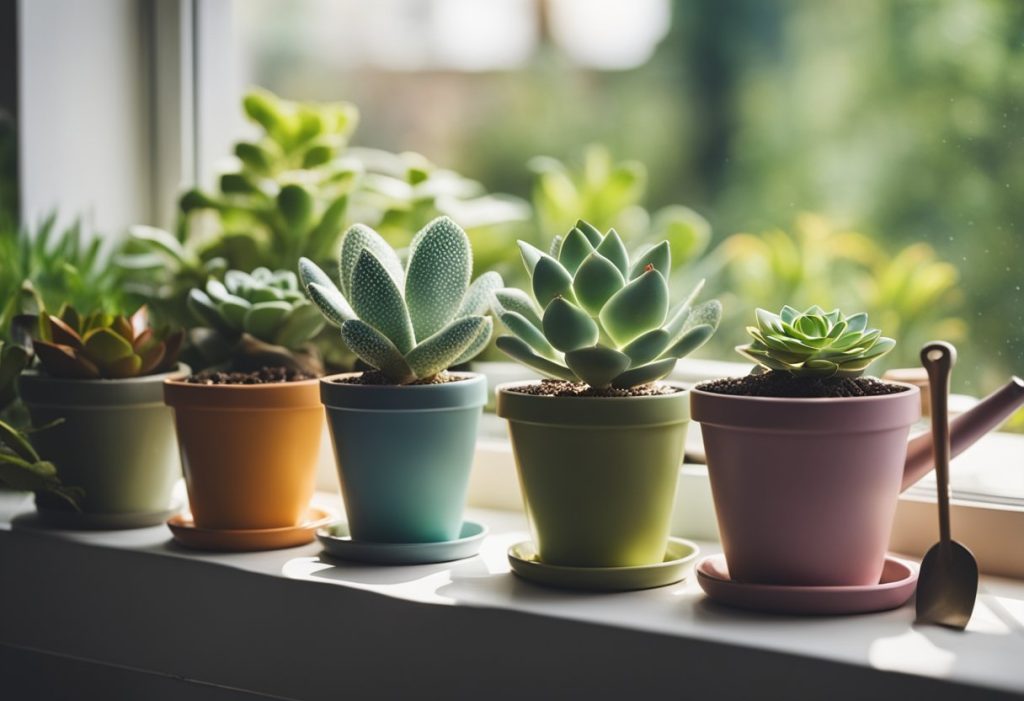
Small pot succulents need minimal care to thrive long-term. With a few simple steps, you can keep your plants healthy for years.
Long-Term Maintenance Tips
Water your succulents sparingly. Most only need watering when the soil is completely dry. Check the soil moisture regularly with your finger.
Rotate the pots every few weeks so all sides get even light. This prevents lopsided growth. Place them in bright, indirect sunlight for best results.
Repot your plants every 2-3 years or when they outgrow their containers. Use fresh, well-draining succulent soil. Gently remove old soil from the roots before repotting.
Prune dead leaves regularly to keep your succulents looking tidy. Use clean, sharp scissors to avoid damaging the plant.
Watch for pests like mealybugs or spider mites. Treat infestations quickly with insecticidal soap or rubbing alcohol.
Low-maintenance plants like zebra cactus, sedum, and tiger’s jaw are great choices for beginners. They tolerate some neglect and still look great.
Frequently Asked Questions
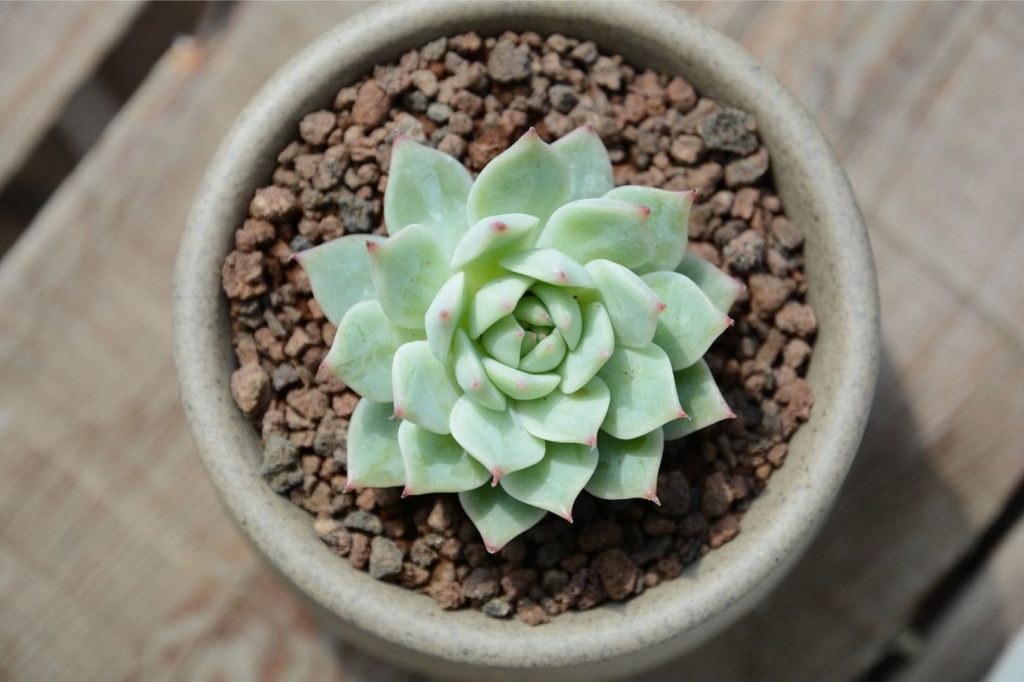
Small pot succulents require specific care and attention. Here are some key things to know about growing these mini plants.
How should I care for mini succulents in an indoor setting?
Place your small succulents in a spot with bright, indirect light. Water them sparingly when the soil feels dry. Use a well-draining potting mix made for succulents.
Keep the temperature between 60-80°F (15-27°C). Avoid cold drafts and sudden temperature changes.
What are the best varieties of succulents for growing in small pots?
Echeveria, Sedum, and Haworthia are great choices for small pots. These plants stay compact and don’t need much space to thrive.
Lithops (living stones) and Sempervivum (hens and chicks) also work well in tiny containers.
How frequently should small potted succulents be watered?
Water small potted succulents every 7-14 days during growing season. In winter, reduce watering to every 3-4 weeks.
Always check the soil first. Only water when the top inch of soil is completely dry.
Are there specific succulents that remain small throughout their life cycle?
Yes, some succulents stay small their whole lives. Crassula ‘Tom Thumb’ and Sedum ‘Little Missy’ are good examples.
Echeveria ‘Perle von Nurnberg’ and Haworthia cooperi also remain compact as they mature.
What is the significance of having drainage in small succulent pots?
Drainage holes are crucial for small succulent pots. They prevent water from sitting at the bottom and causing root rot.
Good drainage helps maintain the right soil moisture level. It allows excess water to escape, keeping your succulents healthy.
Where can I find a reliable supplier for mini succulent pots in bulk?
Check local garden centers or nurseries for bulk mini pots. Online marketplaces like Amazon or Etsy also offer many options.
Wholesale plant suppliers often sell small pots in large quantities. Make sure to read reviews before buying from a new seller.

